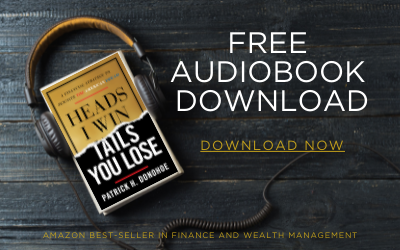In the fast-paced world of business ownership, the unexpected isn’t a question of if—it’s when. Whether it’s the sudden departure, disability, or death of a partner, these moments can disrupt operations and put your company’s future at risk.
That’s where buy-sell agreement funding becomes essential. A properly structured and funded agreement ensures a seamless transition of ownership, protects your team and stakeholders, and keeps the business moving forward—no matter what life brings.
Still, many businesses overlook this critical element of succession planning. Without a clear funding mechanism—such as life or disability insurance—even the best-drafted agreement can fall short. The result? Unnecessary delays, internal disputes, or financial strain that could compromise everything you’ve worked to build.
What this means for you is that creating liquidity in advance isn’t just good planning—it’s your financial safety net.
In this guide, we’ll show you how funding strategies like life and disability insurance provide the liquidity needed for timely buyouts, protect against disruption, and reinforce your broader business and estate goals.
What Is Buy-Sell Agreement Funding?

The buy-sell agreement funding is the financial lifeline of any solid business succession plan. A buy-sell agreement is a legally binding contract that outlines what happens to an owner’s business share in the event of a triggering event, such as:
- Death of a partner.
- Long-term disability.
- Retirement.
- Voluntary exit or dispute.
These events can cause major disruption or even dissolve a business if not handled properly. That’s why it’s critical to have a funded agreement—one backed by guaranteed financial resources to ensure a smooth ownership transition.
Without proper funding, your business may face delays, cash shortages, or disputes that can lead to partnership dissolution or even bankruptcy. A buy-sell agreement without funding is like having a will without assets—it doesn’t accomplish much when it matters most.
Who Needs a Buy-Sell Agreement and Why?
Not every business is built to last—but with the right strategy, yours can thrive through any transition.
If your business has shared ownership—such as a partnership, family enterprise, multi-member LLC, or closely held corporation—you’re especially vulnerable when a co-owner exits due to death, disability, retirement, or conflict. Without a structured buy-sell agreement in place, the resulting uncertainty can trigger disputes, forced sales, or even business collapse.
And what about smaller companies? For them, buy-sell agreement funding is even more essential. These businesses often don’t have excess cash reserves, making it harder to buy out an owner’s share without straining finances or disrupting operations.
What this means for you is that buy-sell funding ensures two things happen:
- Your business stays in the hands of the people who built it.
- The departing owner’s family or estate receives fair, timely compensation.
If your business relies on just a few key people, supports your family’s future, or represents a significant portion of your personal net worth, then a funded buy-sell agreement isn’t optional—it’s foundational. It’s more than legal protection. It’s a plan to protect your people, your purpose, and your legacy.
Why Creating Liquidity Is Essential

One of the most overlooked aspects of buy-sell agreement funding is the need for immediate liquidity. Liquidity ensures that when a triggering event occurs, funds are available to buy out the departing owner’s share quickly, pay heirs or beneficiaries fairly and keep operations running smoothly. Others benefits of liquidity in a buy-sell agreement are:
- Prevents forced sales.
- Avoids internal disputes.
- Ensures predictable and fair partner buyouts.
- Supports smooth business transition planning.
- Aligns with strategic estate planning for business owners.
For all that is achieved with immediate liquidity, it is clear that you should not wait for times of crisis to resort to it. From now on you should turn liquidity into a protection plan.
The Three Pillars & Funded Buy-Sell Agreements
At Paradigm Life, we view buy-sell funding not just as legal protection—but as a strategy aligned with your bigger financial picture:
- Cash Flow: Insurance-funded agreements provide immediate capital—no loans, no asset sales—preserving your business’s operating efficiency.
- Protection: Transitions are smooth, disputes are minimized, and your business stays protected from internal disruption or forced sales.
- Wealth: Ensures your business equity converts into a legacy, not a liability—supporting your estate planning and generational wealth goals.
What this means for you is that a properly funded buy-sell agreement isn’t just a safety net—it’s a cornerstone of long-term business continuity and personal financial independence.
Understanding the Tax Implications of Buy-Sell Agreement Funding

When funding a buy-sell agreement—especially with life insurance—it’s essential to consider the tax implications of your strategy.
One of the most compelling benefits of using life insurance is that the death benefit is generally received income-tax-free by the beneficiary, whether that’s another owner or the business itself. This allows for a quick, tax-efficient transfer of ownership—without triggering unwanted income tax burdens.
However, it’s important to be aware of a few key details:
- Premiums paid on the policy (by the business or the owners) are not tax-deductible.
- This can impact short-term cash flow, but the tradeoff is guaranteed, tax-advantaged liquidity when it’s needed most.
- If the insured retains incidents of ownership or if the agreement isn’t properly structured, the death benefit may be included in their taxable estate—potentially triggering estate tax obligations.
While the tax benefits are significant, the structure of your funding strategy must be deliberate, compliant, and aligned with your long-term goals.
At Paradigm Life, we work alongside your tax and legal advisors to ensure your buy-sell agreement is not only funded—but structured in a way that protects both your business and your personal estate.
What Makes a Funded Buy-Sell Agreement Legally Effective?
A buy-sell agreement is only as strong as the legal structure behind it. Without the right foundation, even a well-intentioned plan can unravel when it’s needed most.
To ensure your agreement is legally enforceable and financially reliable, it must be:
- Clearly documented and signed by all owners,
- Aligned with state laws governing ownership transfers, and
- Built around a funding method that matches your business goals.
Key elements of a strong agreement include:
- A clearly defined list of triggering events (e.g., death, disability, retirement, or voluntary exit),
- A mutually agreed-upon valuation method that avoids ambiguity,
- Specific details about who buys, how funds are accessed, and what happens if funding falls short.
Why this matters: A properly executed and funded agreement provides clarity, reduces conflict, and ensures ownership transitions happen smoothly—without delays or disputes.
At Paradigm Life, we collaborate with your legal and financial advisors to ensure your buy-sell agreement is not only fully funded, but also structured for enforceability and long-term alignment with your business succession and estate planning objectives.
Buy-Sell Agreements Are Typically Funded by Which Two Insurance Products?
Buy-sell agreements are typically funded by two primary insurance products, one of them is life insurance. These offer immediate funds in the event of the death of a partner. The proceeds go to the surviving partner(s) or the business entity, allowing for a clean and quick ownership transfer.
The second product is the disability insurance, disability funding kicks in when an owner becomes unable to work due to long-term illness or injury. This is crucial, as disability clauses are commonly included in buy-sell agreements and may require a buyout during the partner’s lifetime.
Bonus Tools: Key Person Insurance and Premium Financing
The key person insurance can be used to cover essential team members and overlap with buy-sell coverage. On the other hand, the premium financing allows businesses to borrow money to pay insurance premiums freeing up working capital.
How to Fund Buy-Sell Agreements: Top Methods
There are multiple ways to structure buy-sell agreement funding. Below are the top funding options business owners use and their characteristics:
Funding Buy Sell Agreements with Life Insurance
- Most popular and reliable method.
- Immediate liquidity upon death of a partner.
- Easy to structure as either entity purchase or cross-purchase agreement.
- Ideal for tax efficiency and speed
Disability Insurance
- Covers long-term absence from illness or injury.
- Often underused, despite disability being more likely than death.
- Works well with a solid disability clause
Cash Reserves or Sinking Fund
- Self-funded approach with savings over time.
- Slower to build and vulnerable to market volatility.
- Better as a secondary option or supplement.
Loans or Credit Lines
- Quick but risky option.
- Adds debt and interest burden.
- Can delay the buyout process and strain finances.
Installment Sale Agreements
- Spread payments over time to reduce immediate cash need.
- Can cause tension if valuation is disputed.
- Best with clear contract terms and third-party appraisals.
To choose the most convenient method for you, you must take into account the characteristics of your company. The main ones to consider are your size, structure and risk tolerance.
Cross-Purchase vs. Entity Purchase Agreements

When setting up a funded buy-sell agreement, you’ll choose between two main structures. In the following table we specify the main characteristics, advantages and disadvantages of these structures, and at the same time, we compare them with each other:
| Type of structure | Main features | Pros | Contras |
| Cross-Purchase agreement | – Owners purchase insurance policies on each other. – Best for small businesses with few owners. – Each owner is the policy owner and beneficiary. – Ensures a personal tax basis increase. | – More flexibility in ownership transfers. – Potential tax advantages for survivors. | – Becomes complex with multiple owners. – Requires separate policies per owner pair. |
| Entity purchase agreement | – Business owns the insurance policies. – Common for LLCs and corporations. – The entity buys back the deceased/disabled owner’s shares. | – Simplified structure. – Centralized policy management. | – No tax basis increase for surviving owners. – May impact balance sheets or raise creditor concerns. |
Planning Ahead: Aligning with Business and Estate Goals
A well-funded buy-sell agreement is more than a legal document, it’s a bridge between business continuity and personal estate planning.In order for you to enjoy these benefits, it is crucial that you plan ahead. This allows you to: helps your partners avoid unexpected financial burdens, reinforces your role in legal business succession, ensures your family receives fair compensation and keeps your legacy intact for years to come.
In planning it is very useful to work with trusted professionals such as estate planners, business attorneys, insurance advisors and tax professionals. They help you structure agreements that are clear, enforceable, and tax-efficient—so you can focus on growing your business, not worrying about its future.
How Often Should You Update Your Buy-Sell Agreement Funding Plan?
A buy-sell agreement isn’t a “set it and forget it” solution. Just like your business evolves, your funding strategy should evolve with it.
Industry best practices recommend reviewing your agreement at least every 2 to 3 years—or immediately after major events like:
- Adding or removing a business partner,
- A significant change in company valuation,
- Ownership restructuring or expansion.
Why it matters: Waiting too long to update your plan can leave serious gaps. If a triggering event occurs—like the death or disability of a partner—an outdated agreement can delay the buyout, disrupt operations, or lead to costly legal disputes.
Common issues like underfunded policies, outdated disability clauses, or stale valuation formulas can turn an otherwise solid plan into a liability.
What this means for you is that consistent reviews ensure your agreement reflects your current ownership structure, market value, and protection needs—giving you confidence that your legacy will be handled exactly as intended.
At Paradigm Life, we help business owners regularly reassess their buy-sell funding strategy as part of a comprehensive and adaptive financial framework—one that grows alongside your company and your vision.
FAQs
What is the most secure way of funding a buy-sell agreement?
Permanent life insurance is the most widely used and secure method. It offers immediate, tax-advantaged liquidity when a partner passes away—ensuring the business or remaining owners can fund the buyout without relying on loans, cash reserves, or disrupted operations.
What are the disadvantages of a buy-sell agreement?
The main risks come from poor execution—outdated valuations, underfunded policies, or unclear terms. Without regular review and proper funding, even a well-written agreement can lead to disputes or delays. Tax consequences can also arise if the agreement isn’t structured carefully.
What is the preferred form to fund a business buy-sell agreement?
For most businesses, the preferred method is permanent life insurance—structured as either a cross-purchase or entity purchase agreement. This ensures fast access to capital without selling assets or impacting working capital. While other tools like savings or loans can supplement, insurance remains the most efficient and scalable strategy.
Protect Your Business with a Funded Agreement
Preparing for the unexpected isn’t just smart—it’s a vital step in protecting everything you’ve worked so hard to create. A buy-sell agreement provides structure, but without proper funding, it’s incomplete. Life can change in an instant—and when it does, your business should be equipped to respond with confidence, clarity, and liquidity.
Whether through life insurance, disability coverage, or other funding solutions, having a strategy in place ensures ownership transitions happen on your terms—not out of panic, pressure, or compromise.
What this means for you is peace of mind: your partners are protected, your family is provided for, and your legacy stays intact.
If your buy-sell plan is outdated—or missing altogether—now is the time to act. Don’t wait for a triggering event to test your plan. Let’s make sure it’s built to withstand anything.
Ready to secure your business and protect your legacy?
Schedule a consultation with a Paradigm Life Wealth Strategist today and discover funding strategies tailored to your business, your values, and your long-term vision.







